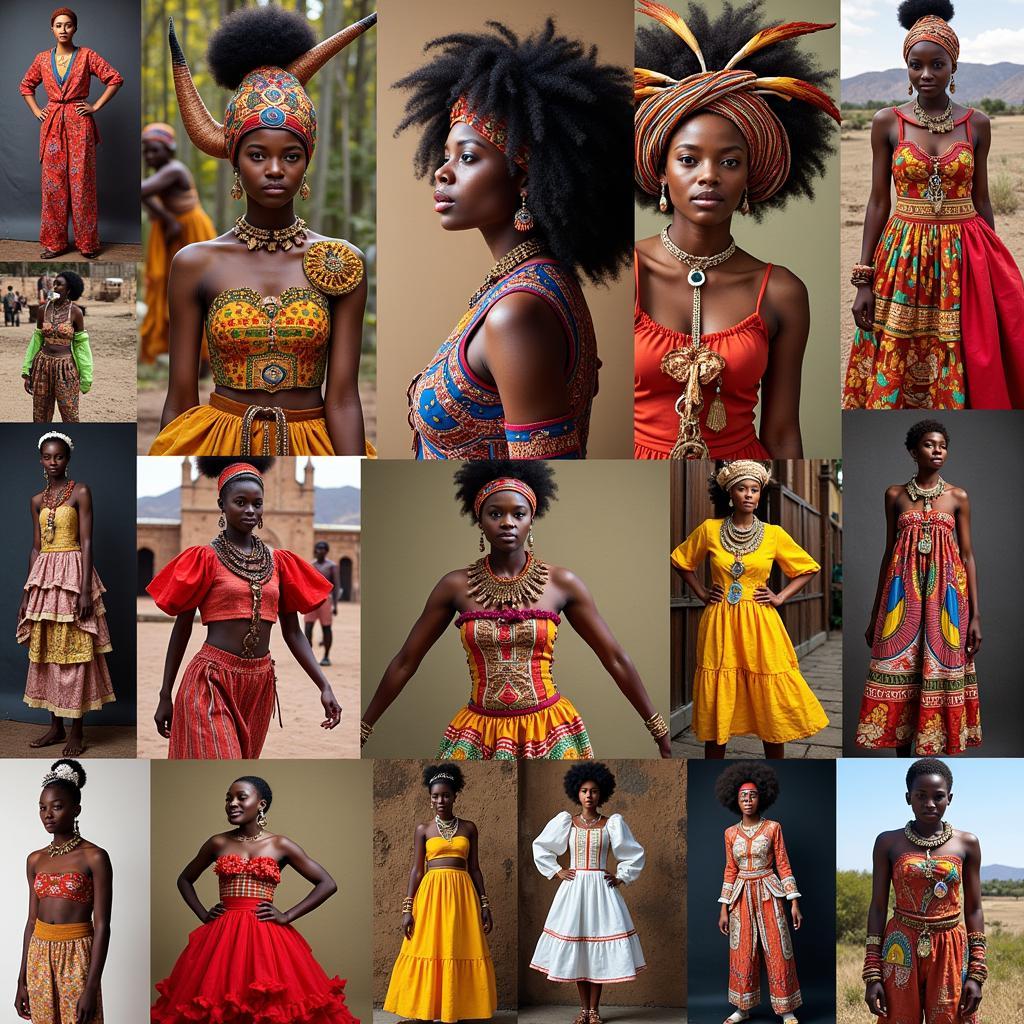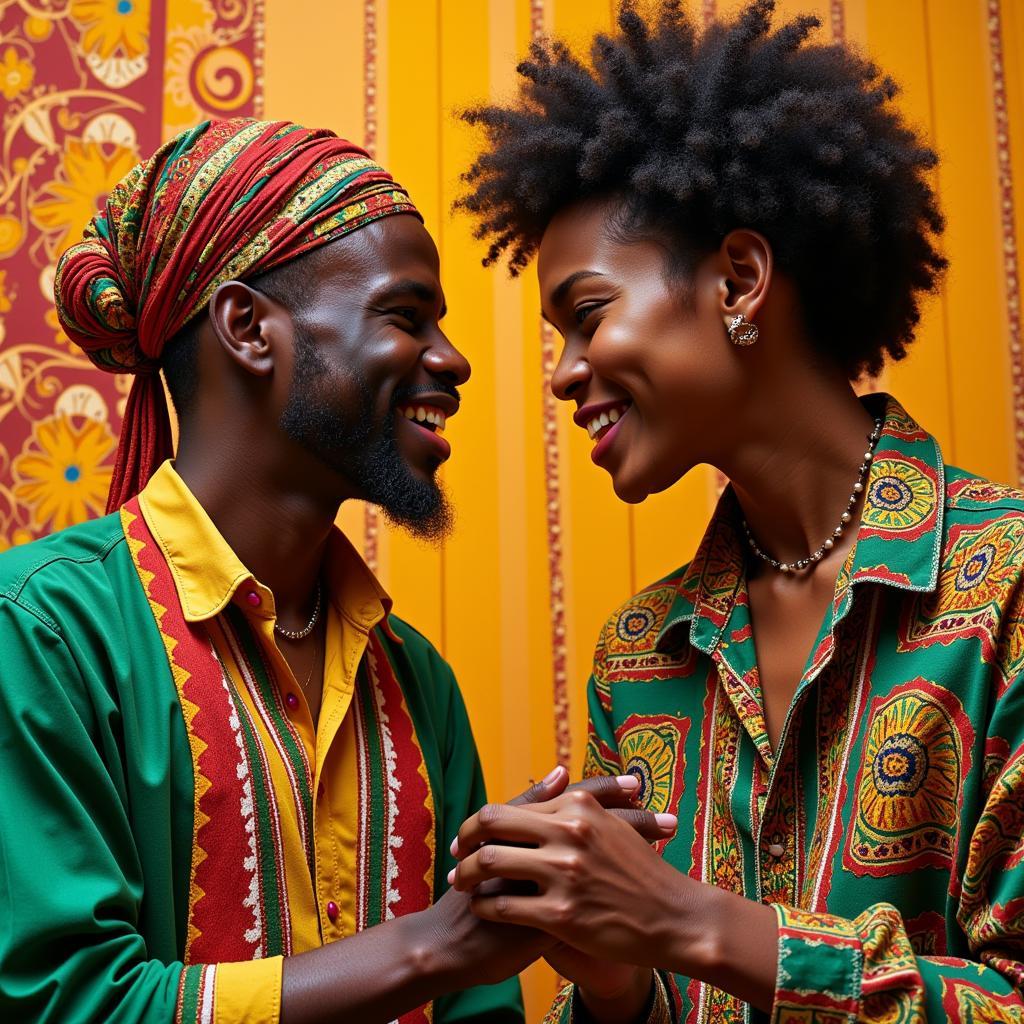The Power of African Book Covers: A Journey Through Art, Culture, and Storytelling
African book covers are more than just covers; they are gateways to rich narratives, vibrant cultures, and diverse perspectives. They capture the essence of the continent’s history, traditions, and present-day realities through captivating visuals and symbolic imagery. This article will delve into the fascinating world of African book covers, exploring their significance, artistry, and how they contribute to the global understanding of African literature and identity.
Exploring the Significance of African Book Covers
African book covers are not merely decorative elements but powerful tools that convey profound messages. They serve as the first point of contact between a reader and a story, shaping their initial impressions and influencing their desire to delve into the text.
“Book covers are the silent ambassadors of stories, whispering promises of adventure and enlightenment.” – Dr. Amani Mbogo, Professor of Literature at the University of Nairobi.
The Visual Language of African Book Covers
African book covers often feature vibrant colors, intricate patterns, and symbolic imagery that reflect the diverse cultures and traditions of the continent. These elements serve as a visual language that speaks to the reader, conveying themes, characters, and settings without the need for words.
- Color: Bold and vibrant colors are often employed to reflect the vibrancy and diversity of African cultures. Red, yellow, green, and blue are frequently used, each carrying symbolic meanings associated with various African cultures.
- Patterns: Intricate patterns, like those found in traditional fabrics, are used to create a sense of depth and complexity, reflecting the rich cultural heritage of the continent. These patterns often hold significant meaning within specific communities, adding an extra layer of significance to the book cover.
- Symbolism: Images and symbols are carefully chosen to evoke specific emotions and associations, enhancing the reader’s understanding of the story. For instance, a lion might symbolize strength and leadership, while a baobab tree might represent resilience and longevity.
The Evolution of African Book Covers
Over time, African book covers have evolved, reflecting changing social and political landscapes. Early covers often depicted traditional scenes and imagery, while contemporary covers embrace modern art styles and contemporary themes. This evolution reflects the growing diversity and complexity of African narratives, and the evolving understanding of the continent’s identity.
The Art of African Book Covers
African book covers are not merely designed for commercial appeal; they are often works of art in their own right. Artists and designers are tasked with capturing the essence of the story and reflecting the culture and context within which it unfolds. This process involves a deep understanding of the story itself, the author’s intentions, and the cultural nuances of the target audience.
Unveiling the Creative Process
“The creation of a book cover is a delicate dance between creativity and cultural sensitivity.” – Kofi Awoonor, renowned Ghanaian poet and novelist.
The creative process behind African book covers often involves collaboration between artists, writers, and publishers. Artists conduct extensive research to understand the story and its cultural context. They may draw inspiration from traditional art forms, contemporary trends, or historical events. The end result is a visually captivating cover that not only reflects the story but also celebrates the continent’s rich artistic heritage.
The Impact of African Book Covers
African book covers play a crucial role in shaping the global understanding of African literature and culture. They can:
- Increase Visibility: Captivating covers help attract readers and draw attention to African literature.
- Promote Cultural Understanding: By showcasing diverse cultures and perspectives, they foster appreciation and understanding of the continent’s rich heritage.
- Inspire Dialogue: Thought-provoking covers can spark conversations and encourage critical thinking about the themes and issues explored in the stories.
The Future of African Book Covers
As African literature gains wider recognition, African book covers are poised to play an even more significant role in shaping perceptions of the continent and its diverse narratives. New technologies, digital platforms, and the rise of independent publishers are creating exciting opportunities for artists to push boundaries and explore new forms of visual storytelling.
Frequently Asked Questions (FAQ)
Q: What are some popular themes explored in African book covers?
A: Themes of identity, heritage, resilience, colonialism, and social change are often depicted in African book covers.
Q: Are there specific cultural elements that are frequently used in African book covers?
A: Traditional African fabrics, masks, sculptures, and landscapes are commonly incorporated into African book covers.
Q: How do African book covers contribute to the global understanding of African literature?
A: They act as visual representations of the diverse cultures and perspectives found within African literature, helping to broaden understanding and appreciation of the continent’s literary heritage.
Q: Where can I find examples of stunning African book covers?
A: You can explore online platforms like Goodreads, Amazon, and African book publishing houses to discover a wealth of examples.
Q: What are some upcoming trends in African book cover design?
A: Expect to see more innovative use of digital technology, a focus on inclusivity and representation, and a continued exploration of cultural and historical themes.
This article has explored the captivating world of African book covers, showcasing their significance, artistry, and impact on shaping global perceptions of the continent. The next time you encounter an African book cover, take a moment to appreciate its visual language, its cultural richness, and its potential to transport you to a world of untold stories.



